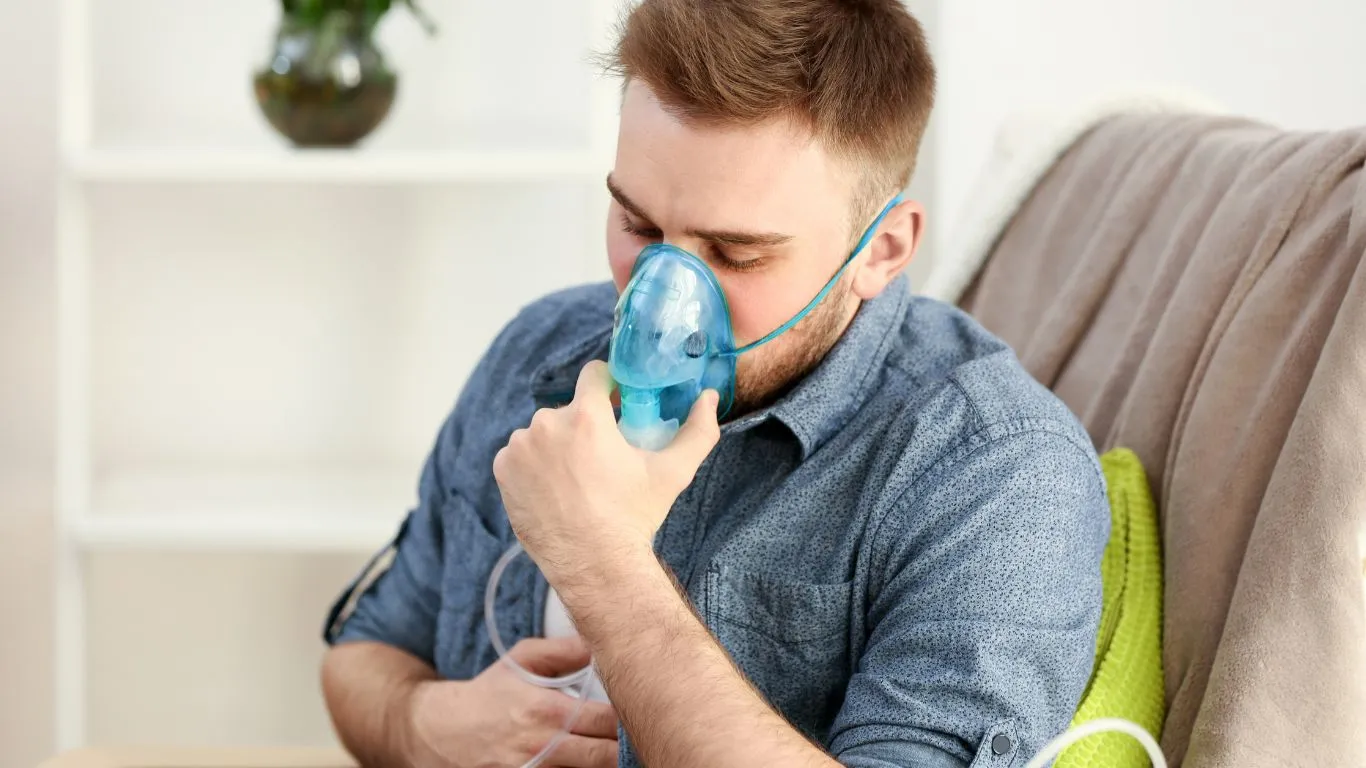Can Exercise-Induced Asthma Be Treated? Effective Solutions & Tips
If you’ve ever had to pause mid-run or slow down during a workout because of shortness of breath, you may have wondered, “Can exercise-induced asthma be treated?” As someone who has worked with countless patients experiencing asthma, especially during physical activity, I can tell you this: It absolutely can. In fact, with the right treatment and a tailored approach, exercise-induced asthma (EIA) can be managed effectively, allowing you to enjoy physical activities without fear of a flare-up. I know this from personal experience, both as a professional and from seeing my patients thrive after implementing a good asthma management routine. So, if you’re looking to learn more about how EIA can be treated, you’re in the right place!
What Is Exercise-Induced Asthma (EIA)?
Exercise-induced asthma, or EIA, is a condition where physical activity triggers asthma symptoms like wheezing, coughing, chest tightness, and shortness of breath. It’s a common issue for many individuals, particularly those who enjoy running, swimming, or even walking briskly. While exercise is great for overall health, it can sometimes cause the airways to become inflamed and constricted, leading to those frustrating symptoms.

What’s unique about EIA is that it’s not triggered by allergens or environmental pollutants like traditional asthma; instead, it’s caused by physical exertion. This means that even if you’re otherwise healthy, you might still experience asthma symptoms during exercise, especially in cold, dry air or when engaging in intense physical activity.
How Does Exercise-Induced Asthma Work?
Exercise increases your breathing rate, causing you to inhale air more rapidly. If you’re not breathing through your nose (which helps warm and humidify air), the dry air can irritate your airways. For those with EIA, this irritation can lead to constriction in the airways, making it harder to breathe. The resulting symptoms can leave you gasping for air, which, let’s be honest, isn’t the best feeling when you’re trying to enjoy your workout.
Can Exercise-Induced Asthma Be Treated?
Yes! The short answer is that exercise-induced asthma can absolutely be treated. With the right strategies, you can prevent symptoms and even improve your exercise tolerance. Over the years, I’ve worked with many patients to develop treatment plans that fit their lifestyle and help them stay active, even with asthma.

But, before we dive into the treatment options, it’s essential to understand that EIA treatment varies from person to person. It depends on your individual asthma triggers, the severity of your symptoms, and how your body responds to different medications. That said, here are some of the most common and effective treatments that have helped my patients manage their EIA symptoms:
1. Medications: The First Line of Defense
Medications play a significant role in managing exercise-induced asthma. The most common medications include:
- Quick-relief inhalers (bronchodilators): These are often prescribed to be used just before exercise to help open up your airways. These medications, such as albuterol, work by relaxing the muscles around your airways, making it easier to breathe.
- Long-term control inhalers: These medications are used to reduce inflammation in your airways over time. While they aren’t meant to be used right before exercise, they can help control asthma symptoms in general, reducing the frequency of flare-ups.
- Leukotriene modifiers: For some people, medications that reduce inflammation, like montelukast, can help prevent symptoms, especially if exercise triggers inflammation in the airways.
I always recommend that my patients speak with their doctor before starting any medication regimen, as each person’s needs are unique. However, with the right prescription and dosage, medications can make a world of difference in reducing symptoms.
2. Warm-Up and Cool-Down: The Unsung Heroes
One strategy that’s often overlooked but highly effective is proper warm-up and cool-down exercises. I can’t tell you how many times I’ve seen my patients push through workouts without adequately warming up, only to experience an asthma flare-up afterward. Warming up helps prepare your body for exercise, allowing your airways to adjust to the increased breathing rate. It also helps increase blood flow and prevent muscle strain.
A good warm-up doesn’t need to be long—just 5-10 minutes of light aerobic activity will suffice. And don’t forget the cool-down afterward! Cooling down allows your body to gradually return to its normal state, which can help prevent a sudden asthma flare-up after intense exercise.
Managing Environmental Triggers
Another important aspect of managing exercise-induced asthma is controlling environmental factors that may trigger symptoms. For example, exercising in cold, dry air can exacerbate asthma symptoms, as can pollution or allergens in the air. If you’re someone who loves running outdoors, you might want to avoid exercise when the air quality is poor or when it’s extremely cold.

If you can, try to exercise indoors in a controlled environment, or wear a scarf or mask over your mouth when you head out for a jog on a chilly morning. Some athletes find that wearing a face mask helps to warm and humidify the air they breathe, reducing irritation in their airways.
Breathing Techniques to Improve Asthma Control
Another tool in your asthma management toolkit is breathing techniques. These may sound simple, but they can be incredibly effective when incorporated into your workout routine. Personally, I’ve seen a lot of patients benefit from mindful breathing exercises. It’s something I suggest often to those struggling with EIA, and it’s always rewarding to see how much it helps. These techniques are designed to help you control your breathing, ensuring that you don’t overexert yourself and that your airways remain open and clear during exercise.

1. Pursed Lip Breathing
One of the most effective techniques I recommend is pursed lip breathing. It’s simple but powerful: you breathe in slowly through your nose, then exhale slowly through pursed lips (as if you’re blowing out a candle). This technique helps slow your breathing rate, making it easier to get enough oxygen and preventing you from hyperventilating. I’ve had patients report feeling calmer and more in control when they use pursed lip breathing during intense physical activity.
2. Diaphragmatic Breathing (Belly Breathing)
Another technique worth trying is diaphragmatic breathing, or belly breathing. This focuses on using your diaphragm to take deep, full breaths. It’s a great way to engage your lungs more effectively, which can reduce the chances of shortness of breath. To practice this, place one hand on your chest and the other on your belly. When you inhale, try to make your belly rise without your chest moving too much. This will help you take in more air, and over time, it can improve your lung capacity during exercise.
Both of these techniques can help you control your asthma symptoms and improve your stamina. They are also great tools for reducing anxiety, which can sometimes be a trigger in itself. I always encourage my patients to incorporate these exercises into their routine, both before and during their workout. It might feel a bit strange at first, but with practice, they can become second nature.
Exercise Modifications: Finding What Works for You
Not all exercises are created equal when it comes to exercise-induced asthma. Over the years, I’ve seen patients who struggle with certain types of exercise—especially high-intensity activities—find better success with lower-impact or less strenuous activities. That doesn’t mean you have to give up on your fitness goals, though! There are plenty of ways to modify your exercise routine to make it more asthma-friendly, without sacrificing your health or fitness level.

1. Choose Low-Impact Exercises
If you’re prone to EIA, low-impact exercises like swimming, cycling, or yoga can be a great way to stay active without triggering symptoms. Swimming, in particular, is a favorite for many asthma patients because the warm, humid air around the pool helps prevent your airways from drying out, reducing irritation. Cycling on a stationary bike or outdoors can also be easier on the lungs, especially when you control your pace and intensity.
I’ve had patients who initially dreaded exercise, thinking it would always lead to a flare-up, but once they switched to low-impact activities, they were able to enjoy exercise without the same level of concern. I always remind them that you don’t have to be running marathons to be fit—just finding something that feels good for your body is what’s most important.
2. Modify Intensity Levels
If you’re a fan of high-intensity exercise but find that it triggers your asthma symptoms, it’s time to dial back a bit. You don’t need to go full throttle every time you work out. In fact, incorporating intervals of lower intensity can make a huge difference in managing your asthma while still getting the benefits of cardiovascular exercise. For example, if you’re running, try alternating between brisk walking and light jogging. This allows your body to adjust to the exertion level while minimizing the risk of a flare-up.
3. Try Warm-Up and Cool-Down for Every Workout
I’ve mentioned this before, but it’s worth emphasizing again: always warm up and cool down properly. Your warm-up helps prepare your airways for the stress of exercise, while the cool-down allows your body to recover gradually, preventing sudden asthma symptoms. Trust me—taking these extra few minutes before and after your workout can save you a lot of frustration and unnecessary discomfort.
When to See a Doctor: Ongoing Care for EIA
While many people with exercise-induced asthma can manage their symptoms on their own with the right techniques, there are times when you’ll need to seek professional help. If your symptoms persist or worsen despite treatment, it’s important to get in touch with a healthcare provider. I’ve seen many patients who’ve gone years without realizing their asthma could be better controlled, simply because they weren’t using the right medications or strategies.

Here are a few signs that it might be time to consult your doctor:
- Your symptoms become more frequent or severe: If you’re finding that you need to use your rescue inhaler more often, or your symptoms interfere with your daily activities, it’s time to discuss your treatment options.
- Your current medication isn’t working: Sometimes, you might need an adjustment in your medication regimen to get better control of your asthma.
- New symptoms appear: If you start experiencing symptoms you haven’t had before—like frequent coughing or chest tightness outside of exercise—this could indicate an underlying issue that needs to be addressed.
Remember, asthma management is highly individualized, so what works for one person may not work for another. A healthcare provider can help tailor a treatment plan that works best for your lifestyle, helping you stay active and symptom-free.
Case Studies & Real-Life Examples
When it comes to managing exercise-induced asthma (EIA), there’s no better way to understand what works than by seeing real-world examples. I’ve had the privilege of working with so many people who’ve overcome EIA and found ways to stay active. These stories not only inspire others but also highlight just how effective tailored asthma treatments can be. Let me share a couple of examples from my practice that really demonstrate the impact of the right strategies.
Case Study 1: Sarah, the Marathon Runner
Sarah came to me several years ago as a dedicated marathon runner who was facing frequent asthma flare-ups during her training. She would often be fine during short runs, but once the distance increased, her asthma would kick in. After evaluating her condition, we realized that her inhaler use was inconsistent, and she wasn’t warming up properly before her long runs.
We made a few adjustments to her routine: she started using her bronchodilator inhaler about 15 minutes before every long run, incorporated a more gradual warm-up, and worked on her breathing techniques. The result? Sarah was able to complete her marathon without a single asthma-related interruption. Now, she always carries her inhaler and sticks to her warm-up and cool-down routines, ensuring she stays on top of her asthma control.
Case Study 2: James, the Weekend Warrior
Then there’s James, who had always been a casual weekend warrior—hiking, cycling, and playing basketball with friends. However, he started noticing that even mild exertion would leave him gasping for breath. After a few tests, it became clear that he had exercise-induced asthma. He felt discouraged because he didn’t want to give up his active lifestyle, but he also didn’t want to constantly be battling asthma symptoms.
For James, we focused on using preventative medications, like a daily inhaled corticosteroid, and I worked with him on modifying his exercise intensity. We also recommended switching from outdoor cycling on chilly mornings to indoor cycling at the gym. The result? He’s now able to keep up with his weekend activities without worry. James even reported that his overall lung capacity improved, thanks to the combination of medication and breathing exercises.
These cases demonstrate how, with the right approach, you can not only manage exercise-induced asthma but also excel in your physical activities. No one should have to give up what they love just because of asthma—by staying proactive and working with a healthcare provider, you can continue doing what you enjoy.
Key Takeaways: What You Need to Remember
If there’s one thing to take away from this article, it’s that exercise-induced asthma is completely manageable. Whether you’re a competitive athlete or just someone who likes to get outside for a walk, you don’t have to sacrifice your exercise routine because of asthma. Here are some key points to keep in mind:
- Medication is crucial: Never underestimate the power of medication. Pre-exercise inhalers can prevent symptoms, while long-term medications help keep inflammation in check.
- Warm up and cool down: These two simple steps are essential in reducing the risk of a flare-up during exercise. Take your time with these!
- Exercise modifications: Find exercises that work for you. Swimming, cycling, or low-intensity cardio can be great alternatives if running or intense activities are triggering your asthma.
- Breathing techniques: Practice pursed lip and diaphragmatic breathing to improve your lung capacity and reduce the likelihood of asthma attacks.
- Work with your doctor: If your symptoms are persistent, don’t hesitate to consult with your healthcare provider to fine-tune your treatment plan.
FAQs
Here are some of the most frequently asked questions I get about exercise-induced asthma:
1. Can exercise-induced asthma go away?
Unfortunately, there’s no cure for asthma, but it can be effectively managed. Some people may experience fewer symptoms over time as they grow older or as they fine-tune their asthma management plan. However, it’s important to continue managing the condition to avoid flare-ups.
2. Can I exercise with asthma?
Yes! In fact, exercise is beneficial for people with asthma. It strengthens the lungs and cardiovascular system. The key is to find the right type of exercise and to manage your symptoms properly through medication, warm-ups, cool-downs, and breathing techniques.
3. Does cold weather make asthma worse during exercise?
Cold, dry air can definitely make asthma worse for some people. If you’re going to exercise outside in cold weather, try wearing a scarf or mask over your nose and mouth to warm the air before you breathe it in. Alternatively, you can exercise indoors or during warmer times of the day.
Bonus: Additional Resources or DIY Tips
If you’re looking to dive deeper into managing exercise-induced asthma, here are some resources and DIY tips to help you on your journey:
- Asthma Control Plan: Work with your doctor to create a personalized asthma control plan. This plan will help you manage symptoms and know what to do in case of an asthma attack.
- Keep Track of Triggers: Keep a journal of your asthma symptoms and note what activities or environmental factors trigger them. This will help you avoid triggers and plan your workouts more effectively.
- Stay Informed: Stay up to date on the latest asthma research and treatment options. Websites like the Asthma and Allergy Foundation of America are excellent resources.
Appendix: Table, References, Disclaimer, and Call to Action
Here’s a quick reference to summarize some of the treatment strategies and tips we’ve discussed:
| Treatment | Description |
|---|---|
| Quick-Relief Inhalers | Use before exercise to prevent symptoms. |
| Breathing Techniques | Practice pursed lip and diaphragmatic breathing. |
| Low-Impact Exercise | Swim, cycle, or do yoga for asthma-friendly workouts. |
| Asthma Control Plan | Work with your doctor to create a personalized plan. |
Disclaimer: This article is for informational purposes only and should not be considered medical advice. Always consult with a healthcare provider before making any changes to your treatment plan or exercise routine.
If you’re ready to take control of your asthma and stay active, don’t hesitate to reach out to a healthcare professional. It’s time to stop letting asthma hold you back from doing what you love!
Call to Action: Have questions? Need guidance? Get in touch with a respiratory health expert today to start managing your asthma better and live an active, symptom-free life!

Bianca Nala is a compassionate Nurse Practitioner with a strong background in primary and respiratory care. As a health writer for Healthusias.com, she combines her clinical expertise with a talent for clear, relatable storytelling to help readers better understand their health. Bianca focuses on topics like asthma, COPD, chronic cough, and overall lung health, aiming to simplify complex medical topics without losing accuracy. Whether she’s treating patients or writing articles, Bianca is driven by a single goal: making quality healthcare knowledge accessible to everyone.






